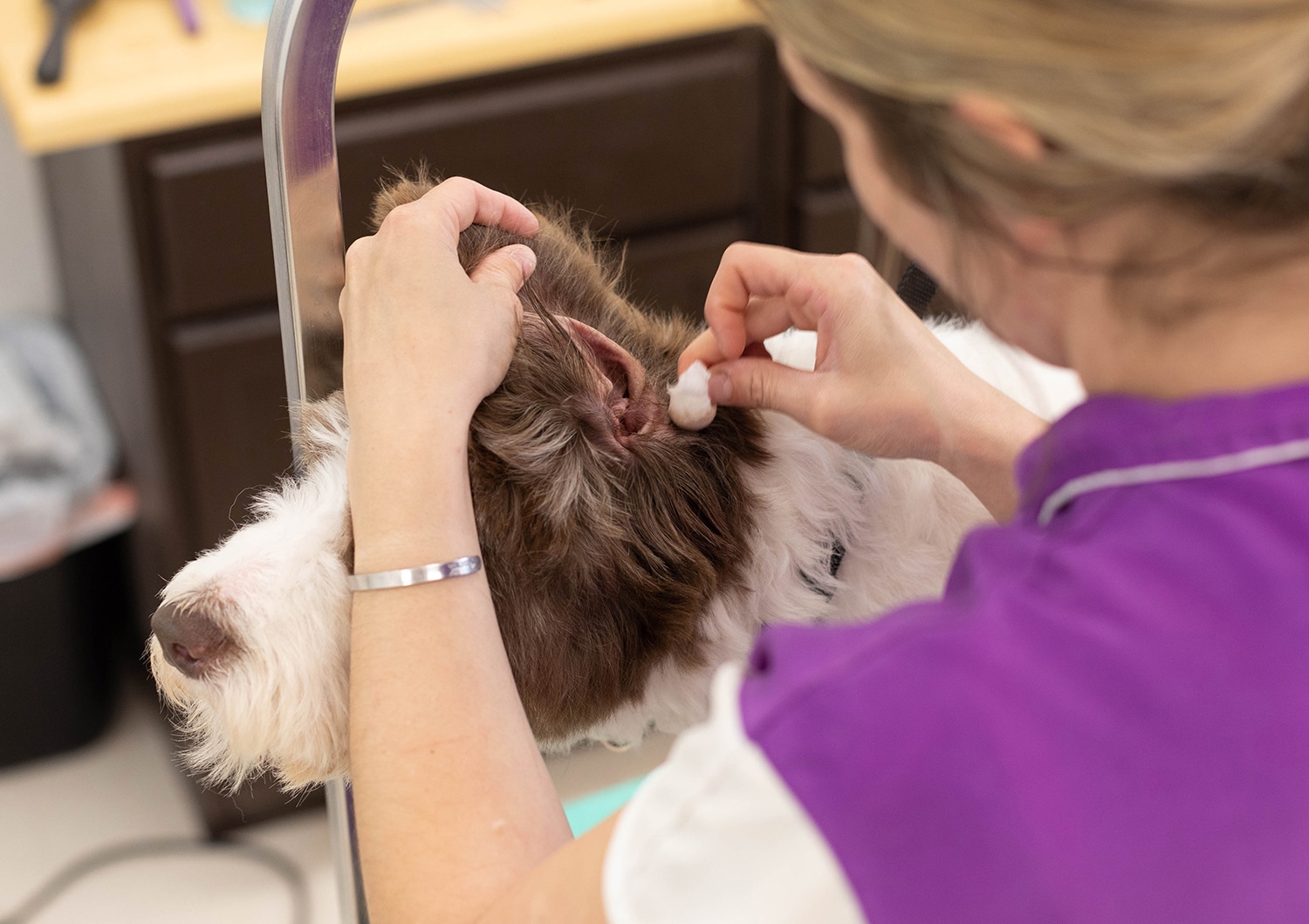As professional pet groomers, we see a lot of dogs with ear infections. They are usually not treatable without the help of a veterinarian, but there are some over-the-counter treatments and at-home remedies that can be attempted if the infection is caught early enough. In this blog, we will talk about signs and symptoms of ear infections, prevention methods and what to do if you think your dog has an ear infection.
Signs of an Ear Infection
Signs of an ear infection can be as follows:
- Redness or irritation of the ear canal or ear leather
- Excessive dirt
- Oozing
- Excessive grease production
- Odor
- Pain
- Itchiness
- Scabbing or crusting
- Head shaking
- Excessive heat
A healthy dog ear is clean and free of debris with no smell or foul odor, though it’s normal to find a small amount of dirt and bacteria in and around the ear. Some dogs show no physical signs of an ear infection. They may start shaking or scratching incessantly at their ears before any discharge is observed in the ear.
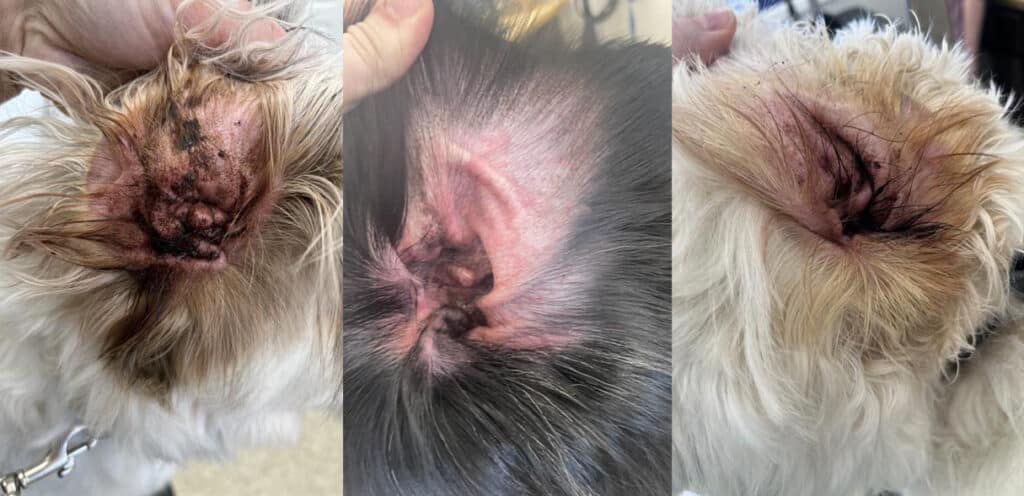
What Causes Ear Infections in Dogs?
A dog’s ear canal is shaped like an L, while humans have a straighter ear canal. The L shape is notorious for holding liquid at the base of the canal, making dogs more prone to ear infections.
Ear infections usually consist of yeast and/or bacteria. Once moisture accumulates in the ear canal, it creates the perfect breeding ground for yeast and bacteria to grow.
There are many underlying conditions and causes for ear infections in puppies and dogs. Some causes for ear infections are:
- Excessive moisture from swimming
- Allergies
- Food allergies lead to roughly 80% of all ear infections
- Environmental allergies
- Foreign object inside ear (grass and foxtails are common)
- Ear mites
- Wax buildup
- Autoimmune disease
- Trauma to the ear
- Cancer
- Polyps in the ears (fleshy growths)
All of these problems, including others, can make a dog’s ear susceptible to infections.
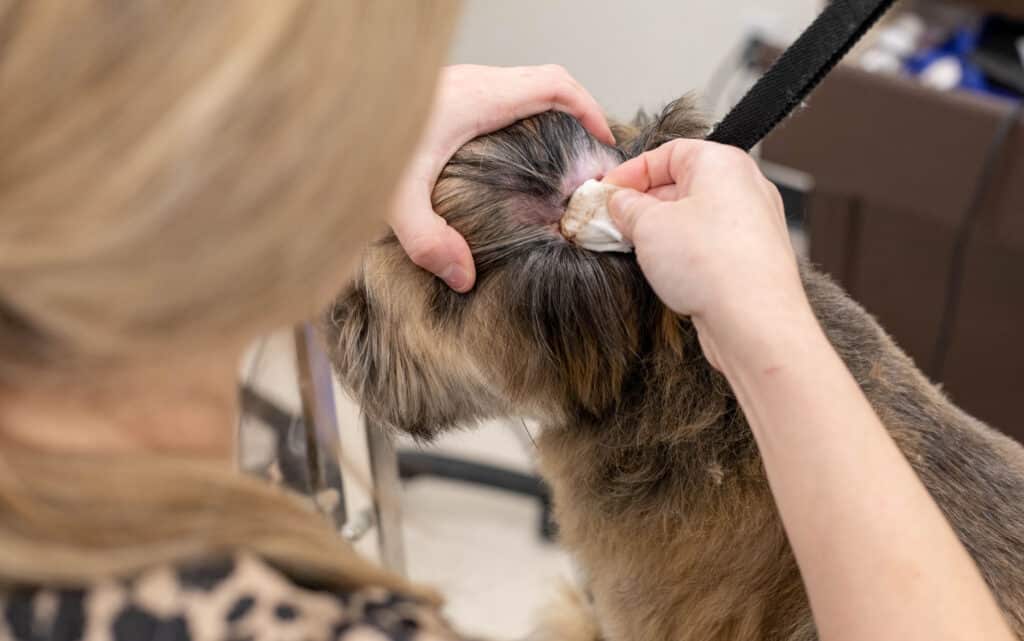
Will My Dog’s Ear Infection Go Away on its Own?
Typically an ear infection will not go away on its own. Some form of treatment is usually required to restore your dog’s health and comfort. Without treatment, a dog’s ear infection can escalate and cause other problems.
Dog Ear Hematomas
If left untreated for too long, your dog could develop ear hematomas, also known as aural hematomas. This is when swollen, blood-filled pockets develop inside a dog’s ear flap. Hematomas are caused by a buildup of fluid that forms at the ear tip, and the swelling that ensues can be intense. They’re extremely painful and can rupture if left untreated, causing severe discomfort for your pet (and a huge mess for you).
There is typically a lot of blood and fluid involved when a hematoma ruptures. If you feel anything “squishy” at the tips of your pet’s ears, take them to a veterinarian as soon as possible.
Can You Treat Ear Infections at Home?
Answering this question is difficult. It implies that you are diagnosing an ear infection without the assistance of a veterinarian. The only way to truly diagnose an ear infection is by having a vet examine the ear canal to see if there is any swelling, irritation or foreign body present.
If you suspect a mild ear infection case in your pet, you can try a remedy at home. Zymox Ear Solution works well. This solution also has some cortisone in it to help with itching. If there is no improvement within 7-10 days, seek veterinarian care.
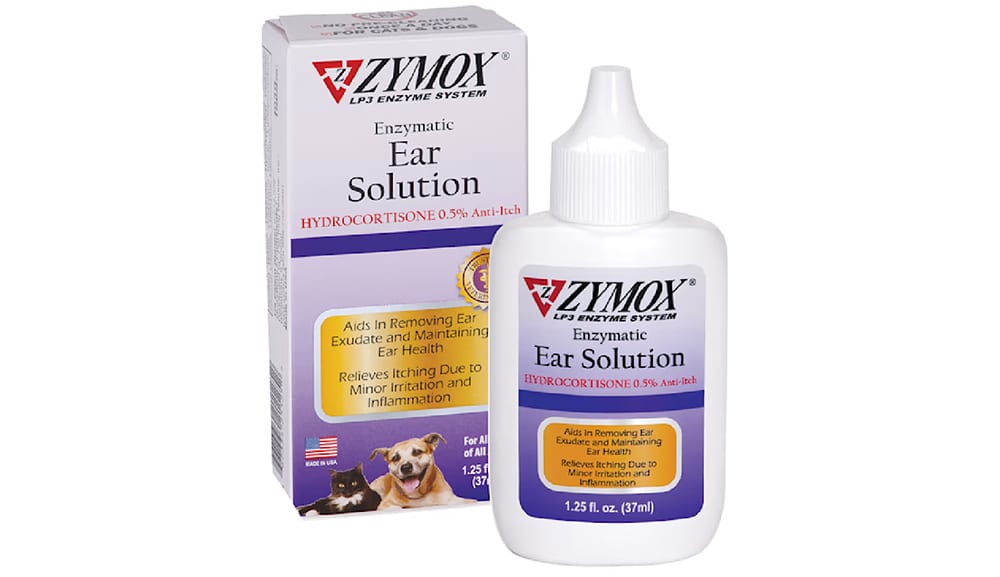
If your pet’s ear infection shows blaring signs of infection, medical attention is advised.
Ways to Help Prevent Ear Infections in Dogs
The following are preventative measures you can take to decrease the likelihood of your pet developing ear infections.
Prevent Water From Entering Your Dog’s Ear Canal
Putting cotton in your dog’s ears during baths and swim time will limit the amount of water that gets into the ear canal. Be sure to remove the cotton balls after water activity is done.
Change in Diet
Food allergies can cause itchy skin and ears which can then lead to secondary infections. If a food allergy is suspected, try an elimination diet. Beef, chicken, corn, wheat and dairy are some of the most common allergies. Elimination diets are hard to do because it takes three months to really see a difference. During this time, no other foods or treats can be given or it can skew the results.
Regular Dog Grooming
Regular dog grooming appointments and ear plucking is advised. Long-haired dogs grow hair inside of their ear canal that sometimes needs to be removed. Plucking of ear hair should only be done by your local groomer or vet.
Please refer to our previous blogs to learn how often your dog or puppy should be groomed.
Regular Ear Cleaning
When cleaning a dog’s ears, apply ear cleaner to a cotton swab and gently wipe the inside of the ear leather. Do not use alcohol or hydrogen peroxide to clean ears as they kill healthy ear bacteria. Always use a pH balanced ear cleaner specifically made for dogs.
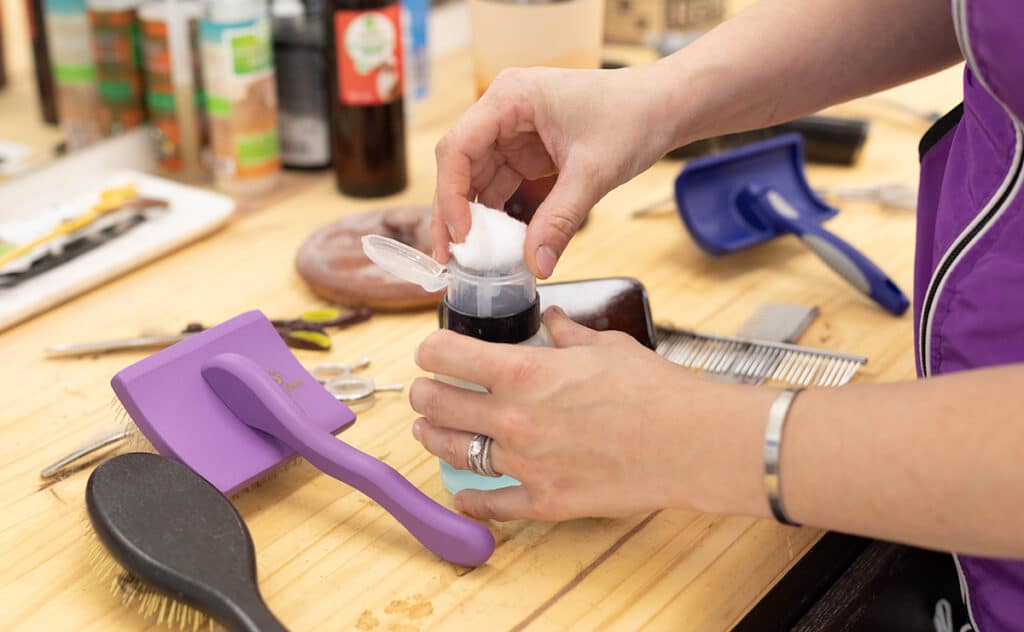
Should I Pluck My Dog’s Ears?
Long- or wire-haired dogs grow hair inside of their ear canal. This hair can clump and cause a blockage, trapping in moisture and creating a breeding ground for bacteria and yeast to grow.
A large buildup can also keep water out of the ear. This is why water-loving dogs like Poodles are much less likely to get an infection when they still have their ear hair.
Whether to pluck ears is a highly debated topic amongst different veterinarians and groomers. There are many groomers and vets who think all of the hair must be removed, and there are several who think none should be removed. At Smoochie Pooch, we base it off of each individual dog on a case-by-case basis.
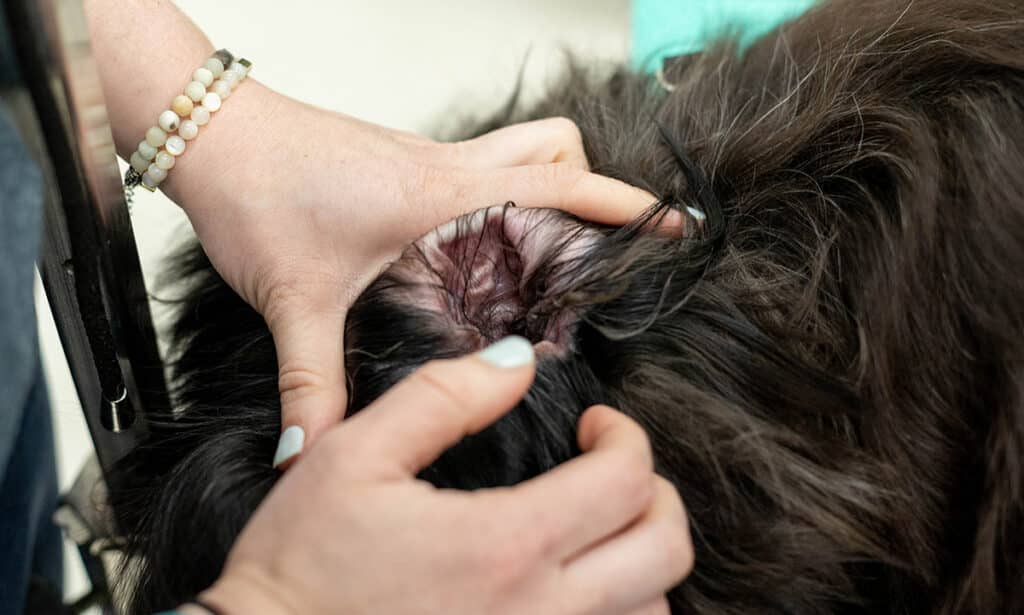
The old adage, “If it ain’t broke, don’t fix it” applies. If there are no signs of ear infections there should be no issues with leaving hair in the ears. If you do decide to have your dog’s ears plucked, remember that it should only be done by a professional pet groomer or veterinarian as mentioned earlier.
How Are Dog Ear Infections Treated?
After an official diagnosis from a vet has been given, treatment can begin. Your veterinarian will clean the ear thoroughly with a medicated ear wash. After the ear is cleaned, medication will be applied.
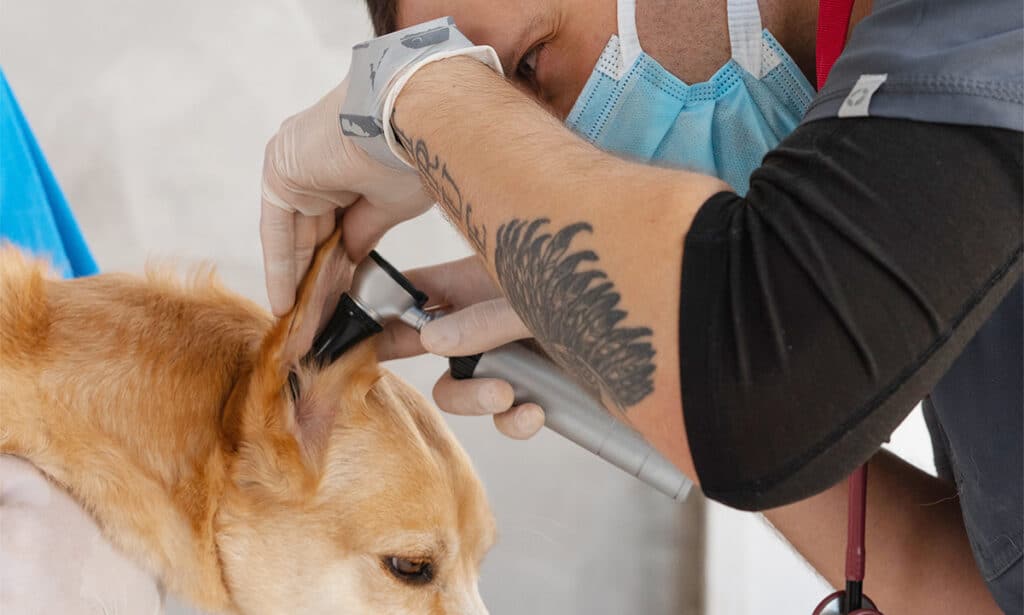
Typically, a prescribed ear drop medication will be sent home with you to apply daily. Depending on the severity of the infection, your pet may also need antibiotics and an anti-inflammatory. Most non chronic ear infections resolve within one to two weeks.
Have questions about ear infections or whether plucking ear hair is right for your pet? The pet groomers at Smoochie Pooch are always happy to help answer your questions the best they can.


